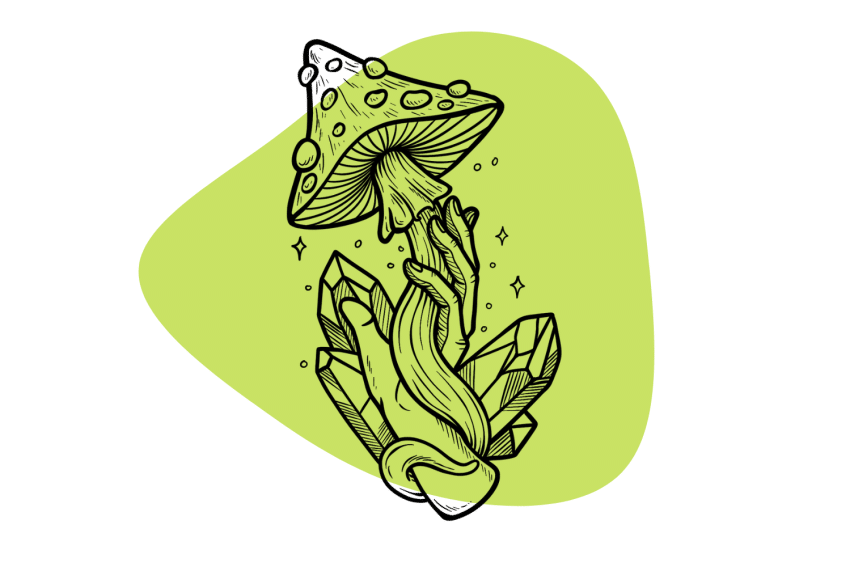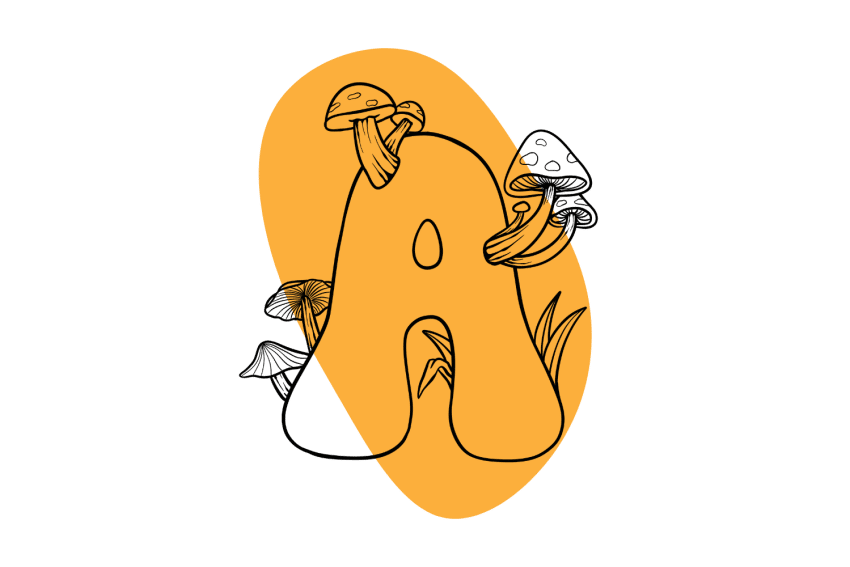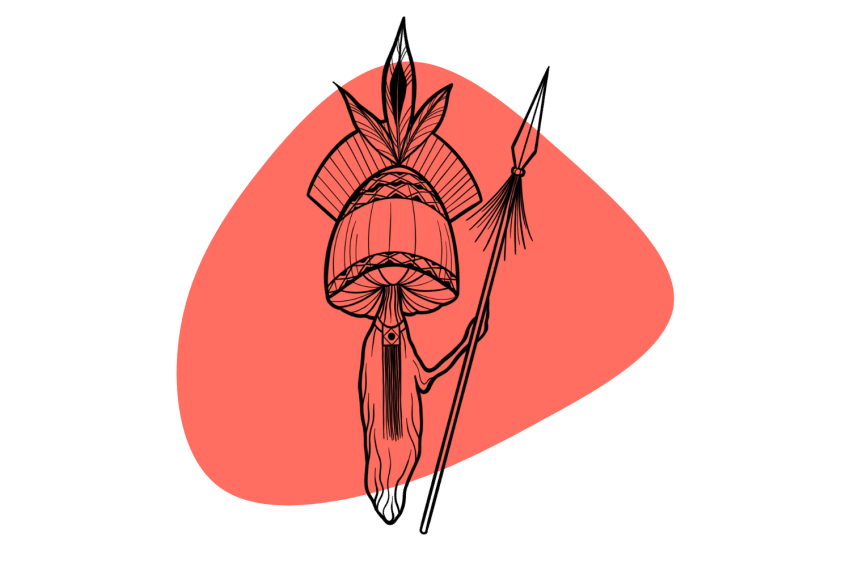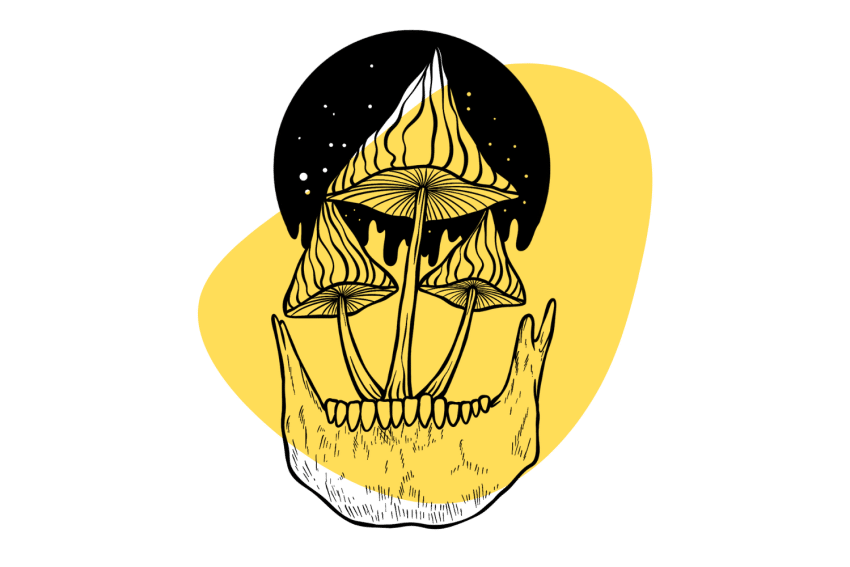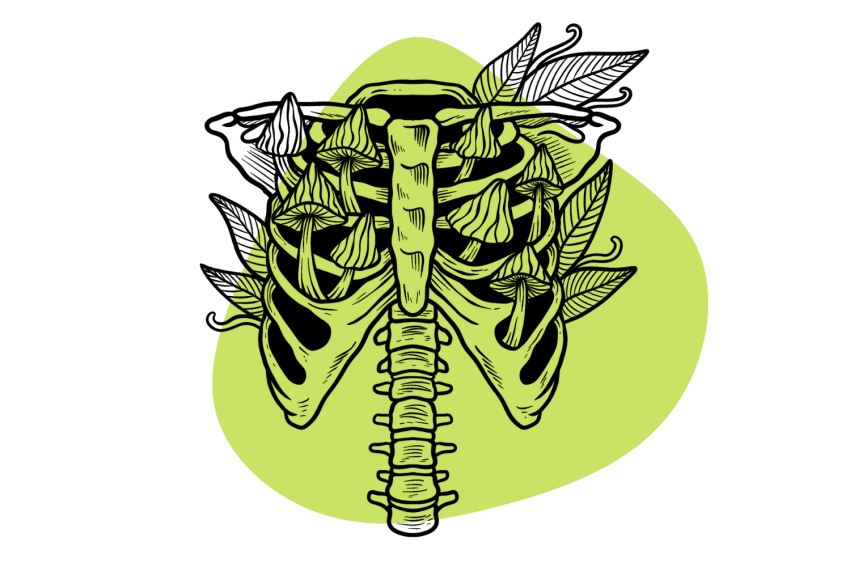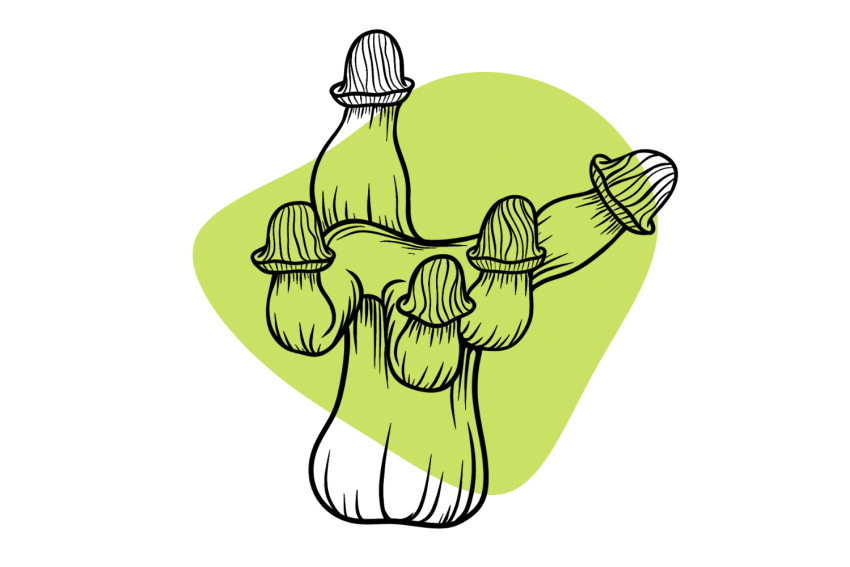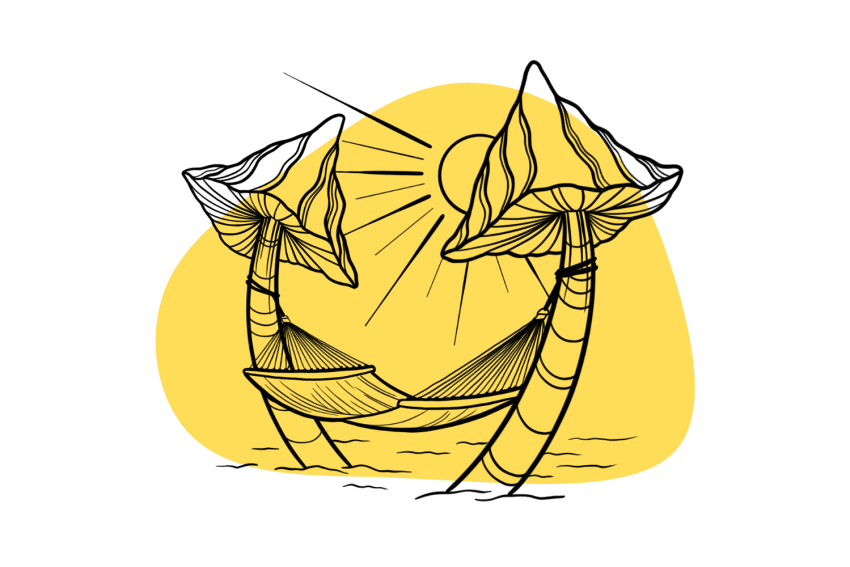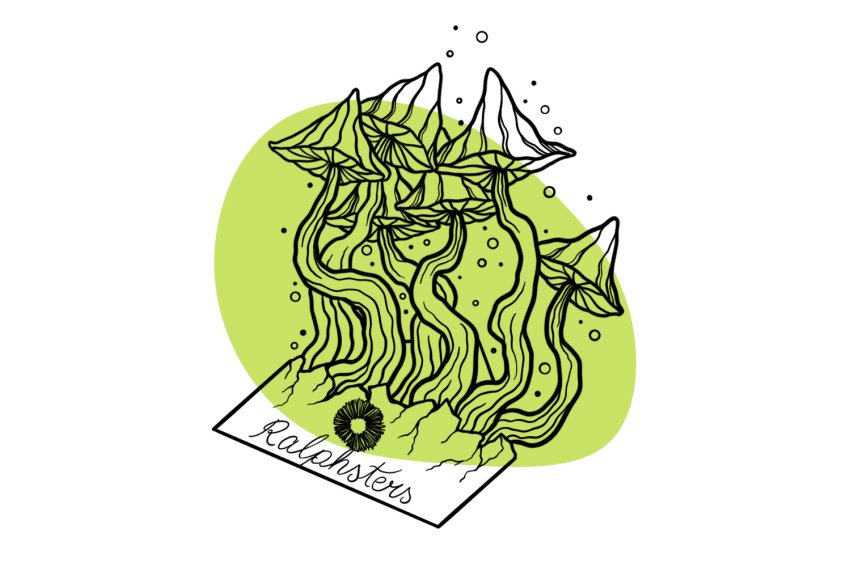Panaeolus subbalteatus: A Neusance “Weed” Mushroom With Psychedelic Properties
This Mottlegill is considered a “weed” in most countries. Things might be different if more people knew about its psychedelic qualities…
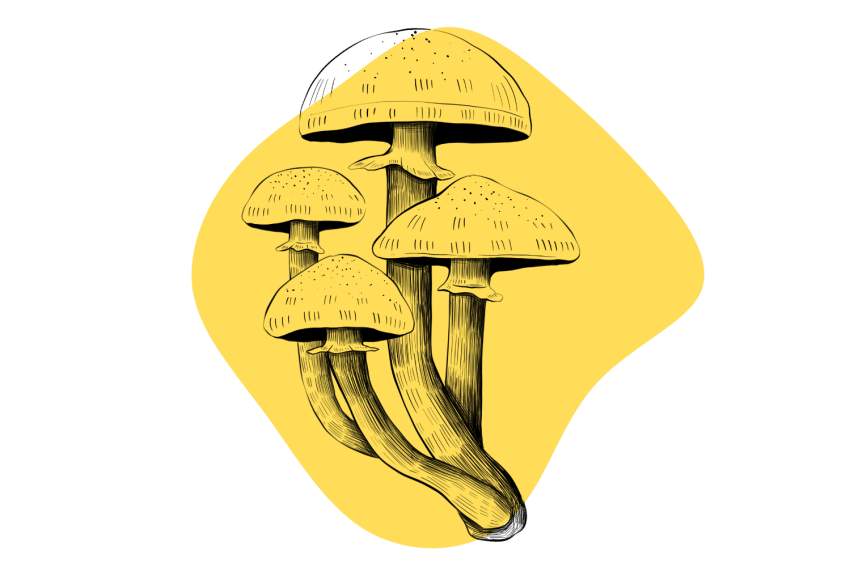
Panaeolus subbalteatus is a psilocybin-producing mushroom species that’s small and unassuming. It’s commonly called the Banded Mottlegill and Weed Panaeolus. It’s often confused with Panaeolus cinctulus — however, despite similarities, these mushrooms feature distinct differences.
P. subbalteatus is a lesser-known psychoactive mushroom species. It’s not as prevalent as Psilocybe cubensis or as potent as Psilocybe azurescens. It’s weak regarding psilocybin content, and several samples must be collected or cultivated to source enough to induce psychoactive effects.
So, is this species worth searching for, or is it better to observe rather than collect?
In this read, we’ll learn about the history, potency, identification, and cultivation of Panaeolus subbalteatus while exploring the benefits and drawbacks of the species.
New to shrooms?
Related: Magic Mushrooms 101 | How Strong is the Average Magic Mushroom? | What Is Lemon Tek?
What Is Panaeolus subbalteatus?
Panaeolus subbalteatus is an unassuming mushroom that’s commonly referred to as the Weed Panaeolus. It’s extremely similar to Panaeolus cinctulus but has some distinctive differences. For decades, P. subbalteatus has been classified as poisonous, with many field guides and ID books still referring to the species as “toxic and inedible.”
P. subbalteatus produces the psychedelic compounds psilocybin and psilocin. It’s not particularly potent, containing less than 0.15% psilocybin (dry weight), but if enough are collected, they’re capable of inducing a psychedelic trip.
Coming in at only two to 10 centimeters in height with caps of around two centimeters in diameter, you have to have eagle eyes to spot them nestling in the grass. They have smooth, brown caps with a distinct dark spot in the cap’s center. They blend into their surroundings well, but if one is found, many more will be nearby.
Finding and collecting enough of these mushrooms to induce a psychedelic experience is challenging, to say the least. However, they may be a good option for microdosing and inducing light psychoactive effects.
Learn more about magic mushroom species: List of Psilocybin Mushroom Species.
Clearing up the Confusion: Panaeolus subbalteatus & Panaeolus cinctulus
Many online sources group Panaeolus subbalteatus and Panaeolus cinctulus together — most refer to them as the same species. Although these two unassuming Panaeolus species share several similarities, differences in habitat, morphology, and spore characteristics make them taxonomically unique.
Panaeolus subbalteatus (Weed Panaeolus)
This species is a widely distributed species and can be found in various regions around the world. It typically grows in grassy areas, especially in lawns, pastures, and meadows.
The mushroom’s caps are conical, becoming broadly convex with age. They are usually brownish or grayish in color, often with a distinctive dark central spot. The gills are gray, turning black in maturity as the mushrooms sporulate.
Panaeolus cinctulus (Banded Mottlegill)
This species is also widely distributed and can be found in various regions. It grows in similar environments and shares habitats (grassland, vegetable beds, and areas of decaying organic matter).
The mushroom’s caps are conical to bell-shaped, with a distinct dark band around the cap’s circumference. They often have radial striations (extended ridges). The color of the caps can vary but is generally brown or gray. The gills are dark gray, turning black as the mushrooms mature and begin to drop their spores.
The History of Panaeolus subbalteatus
Panaeolus subbalteatus was first discovered by mycologists Miles Berkeley and Christopher Broome in 1860. The sample was discovered growing in a cattle pasture close to Apethorpe in the Southeast of England close to Peterborough [1].
The species was scientifically recorded in the United Kingdom Species Inventory as “Panaeolus subbalteatus.” Translated from Latin, “Sub” means somewhat, and “balteat” means girdled — “somewhat sirdled,” describing the appearance of the mushroom’s caps.
After its discovery, Panaeolus subbalteatus and its close relative P. cinctulus began to get a bad wrap. These Mottlegills were blamed for several mushroom poisonings across the globe and were labeled as “Poison Panaeolus.”
Perhaps the most famous poisoning was reported in 1916 by the American mycologist William Murrill [2]. Murrill discovered the species while working in the New York Botanical Gardens when a local cultivator of field mushrooms (Agaricus campestris) served her family mushrooms from the cultivation beds. Among the field mushrooms were Panaeolus subbalteatus specimens that had seeded naturally.
Shortly after consuming the mushrooms, the family experienced delirium, nausea, and vomiting. Murrill falsely identified the species, believing he had discovered a new variety of toxic mushrooms. He named the species “Panaeolus venenosus” and warned the public about this “fatal new mushroom species.”
Murrill warned field mushroom cultivators about the poisonous imposter shroom, advising them to be vigilant during harvesting and refrain from eating or selling any mushrooms that looked different from the culinary cultivar.
William Murrill’s report sparked fear among Americans. Panaeolus subbalteatus and P. cinctulus were labeled as deadly — a label that clung to the mushrooms until the mid-1990s.
Although reports of hallucinatory effects have been reported for decades, these effects were associated with poisonings rather than the presence of psilocybin. It wasn’t until the mid-90s when legendary mycologist Paul Stamets wrote about the psychedelic effects of certain species of Panaeolus, that P. subbalteatus lost its poisonous status and gained its psychedelic reputation.
Stamets wrote of the psychedelic properties of this mushroom species in his book titled “Psilocybin Mushrooms of the World” in 1996. Since then, many people have looked at the “Poison Panaeolus” in a different light, but the species is still considered toxic in many ID guides.
The Potency & Effects of Panaeolus subbalteatus
Although Panaeolus subbalteatus is psychedelic, the mushrooms produce significantly lower levels of psilocybin and psilocin compared to other species. Even compared to low-potency mushrooms such as Psilocybe mexicana and Psilocybe baeocystis, P. subbalteatus is weak.
The exact concentration of psilocybin and psilocin in these mushrooms is unknown. There’s a lack of tryptamine testing for Panaeolus subbalteatus, and a sample has yet to be entered into the Psilocybin Cup. With that said, we estimate that the species is capable of producing around 0.20% total tryptamines (combined psilocybin, psilocin, baeocystin, and others).
The average Panaeolus subbalteatus sample likely contains somewhere in the region of 0.05% and 0.15% combined psilocybin and psilocin (dry weight).
With this in mind, you’ll need at least seven grams of dried Panaeolus subbalteatus mushrooms to induce any noticeable psychedelic effects. With the small size of these mushrooms, tens, if not hundreds, of mushrooms are required to induce a psilocybin-induced psychedelic trip.
If you’re keen enough to collect a large amount of P. subbalteatus mushrooms, you can expect effects typical of any other psilocybin mushroom species.
The effects of Panaeolus subbalteatus and other psilocybin mushrooms include:
- Altered perception of time
- Euphoria
- Visual & auditory hallucinations
- Intense emotions
- Increased introspection
- Spiritual (mystical) experiences
- Changes in perception of self
- Enhanced creativity
- Increased empathy
- Increased sociability
- Improved mood
What’s the Dose of Panaeolus subbalteatus Mushrooms?
Panaeolus subbalteatus mushrooms contain low levels of psilocybin. This means large amounts are required to induce psychedelic effects. Where a single gram of Psilocybe cubensis is capable of inducing a mild trip, at least four grams of P. subbalteatus is required to induce the same effects.
These mushrooms are small. One P. subbalteatus shroom weighs around 0.1 grams when dried. If you’re to collect six grams or more (enough for a stronger trip), you’ll need to collect at least 60 mature mushrooms — often more. It’s for this reason that these mushrooms are more suited for microdosing.
If you plan on foraging for wild mushrooms with the intention of tripping, we recommend going in search of a stronger species. Psilocybe cubensis, Psilocybe cyanescens, Psilocybe semilanceata, Psilocybe mexicana, and Psilocybe caerulescens grow in different environments across the globe. You’re bound to have at least one of these species present in the wild in your region.
With that said, here are the rough doses in dry weight for Panaeolus subbalteatus:
- Low Dose: 3 to 4 grams
- Medium Dose: 4 to 6 grams
- High Dose: 6 to 10 grams
- Heroic Dose: 10 grams or more
Magic Mushroom Dosage Calculator
Double-check the potency of the DXM you’re using, and look for the addition of other compounds such as acetaminophen which can cause severe liver-toxic side-effects at this dose.
Where Can You Find Panaeolus subbalteatus Mushrooms?
Panaeolus subbalteatus mushrooms grow across the globe in a variety of climates. They can be found growing year-round after periods of rainfall but are most prevalent during the months of fall.
Panaeolus species are saprobic. This means they obtain nutrients by decomposing organic matter. They can be found growing in compost heaps, vegetable beds, lawns, grassland, and pastures grazed by horses, cattle, and sheep. They will grow directly from manure but are more commonly found growing from the nutrient-rich ground nearby and areas with rotting organic matter.
The best environments to find these mushrooms are open areas of grassland and agricultural land that’s mulched — think vegetable beds and farmland that’s cultivated using compost and/or slurry.
What Countries Do Panaeolus subbalteatus Mushrooms Grow In?
Panaeolus subbalteatus hasn’t adopted the common name “Weed Panaeolus” for no reason. This mushroom species grows in a variety of climates and isn’t susceptible to contamination. It’s widespread and grows in a range of environments across the Northern and Southern Hemispheres.
You’ll find Panaeolus subbalteatus growing wild in the following countries:
- Argentina
- Australia
- Brazil
- Canada
- Chile
- China
- Denmark
- Finland
- France
- Germany
- India
- Iran
- Israel
- Italy
- Japan
- Mexico
- Netherlands
- New Zealand
- Norway
- Poland
- Portugal
- Russia
- South Africa
- Spain
- Sweden
- Thailand
- Turkey
- Ukraine
- United Kingdom
- United States
This species likely grows in countries outside of this list. The list above contains the countries where the species has been officially documented.
How To Identify Panaeolus subbalteatus
This species can be hard to identify for amateur foragers. It’s a small, unassuming mushroom that has several look-alike species. If you’re new to foraging and want to find psilocybin-containing mushrooms, we recommend searching for a species that’s easier to ID, such as Psilocybe semilanceata (the Liberty Cap mushroom).
Never consume a mushroom if you’re unsure of its identity. Make sure you have a detailed identification guide and a local field guide, and know how to ID this species with 100% accuracy before heading out into the wild.
Read our guide on mushroom anatomy to get started.
With that said, here are the physical characteristics of Panaeolus subbalteatus:
1. Mushroom Caps
The caps of Panaeolus subbalteatus range from 1.5 to 5.5 centimeters in diameter. They start off convex when young, transitioning to broadly convex or nearly flat when mature. The color of the caps varies from light brown to grayish with a distinctive dark central spot. They darken and become slimy after periods of rainfall or high humidity.
2. Gills
Panaeolus subbalteatus’ gills are broadly attached to the stem (adnate), densely packed, and slightly swollen at the center close to the stem. In young mushrooms, they are gray-colored, becoming dark brown to black as the mushroom matures and begins to drop its spores. In young mushrooms, the edges of the gills are often whitish, later turning black. Gently splitting the cap can reveal this color difference.
3. Stipe (Stem)
The stipes (stems) of Panaeolus subbalteatus measure between 1 to 4 millimeters in thickness and 2 to 10 centimeters in length. They are hollow, fragile, and fibrous. When split, fibrous strands can be noted across the length of the stipe. The color can range from reddish-brown to dark brown. They’re often coated with a white powdery substance and darken toward the base.
4. Spores
The spore print of Panaeolus subbalteatus is charcoal-black. When viewed under a microscope, the spores are lemon-shaped from a side view and sub-ellipsoid from a face view. The basidia are 2- and 4-spored, and the dimensions range from 11.5-14 by 7.5-9.5 µm (micrometers).
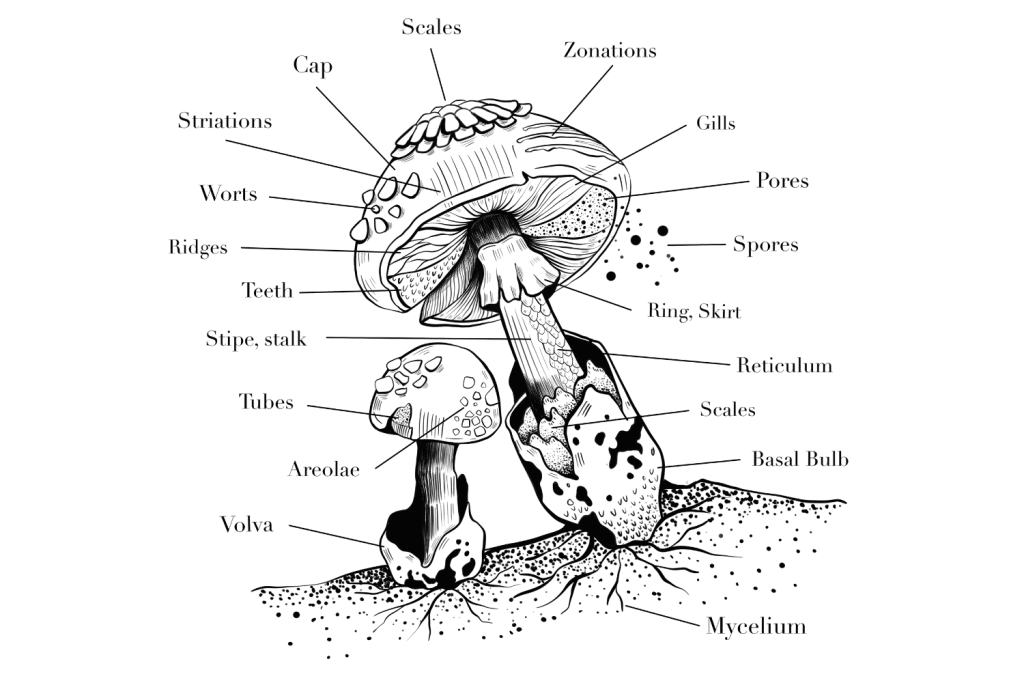
Panaeolus subbalteatus Look-Alikes
Several other mushroom species look similar to Panaeolus subbalteatus. Some of these “look-alike” species are edible, some are psychoactive, and others are toxic. Many of the P. subbalteatus look-alike species belong to the same genus — Panaeolus. Others belong to genera such as Galerina and Conocybe — these species are highly toxic.
With that said, here are a few commonly misidentified species:
1. Panaeolus cinctulus (Banded Mottlegill)
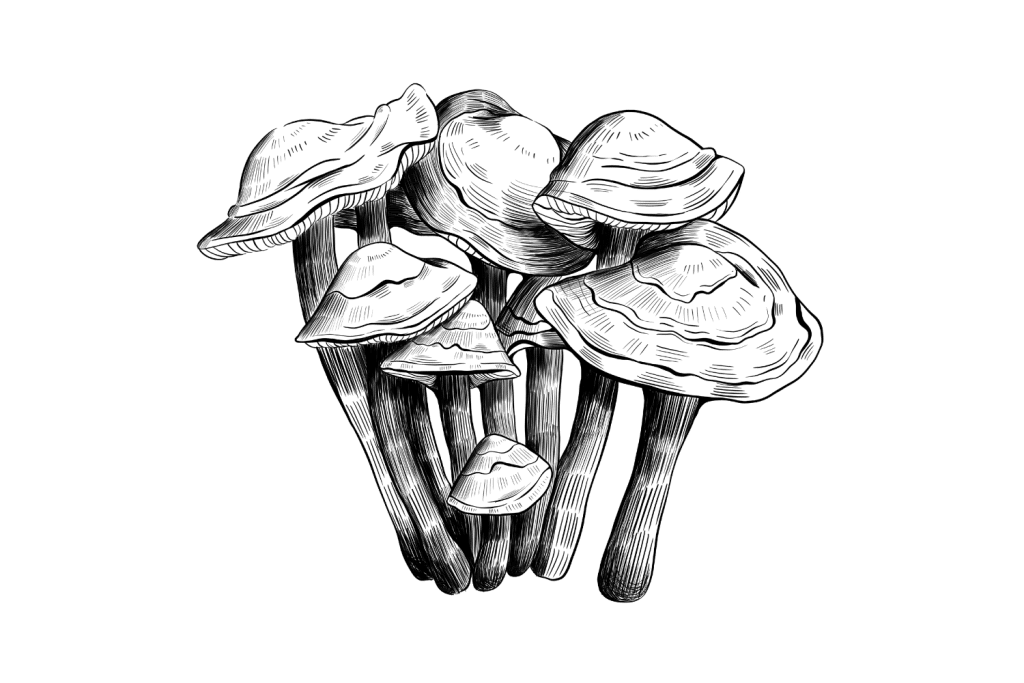
Panaeolus cinctulus is the closest look-alike to Panaeolus subbalteatus. These two species are close relatives and are extremely difficult to tell apart, even by more experienced foragers.
P. cinctulus is often listed as the same species. In fact, most field guides don’t recognize them to be different. You’ll often find P. subbalteatus listed as “Panaeolus subbalteatus/Panaeolus cinctulus” in many ID books.
Luckily, these two species share similar chemical profiles. They both produce psilocybin and psilocin in similar concentrations and are relatively safe to consume. If one is misidentified as the other, there’s little risk — both species produce the same effects.
2. Panaeolus foenisecii (Haymaker’s Mushroom)
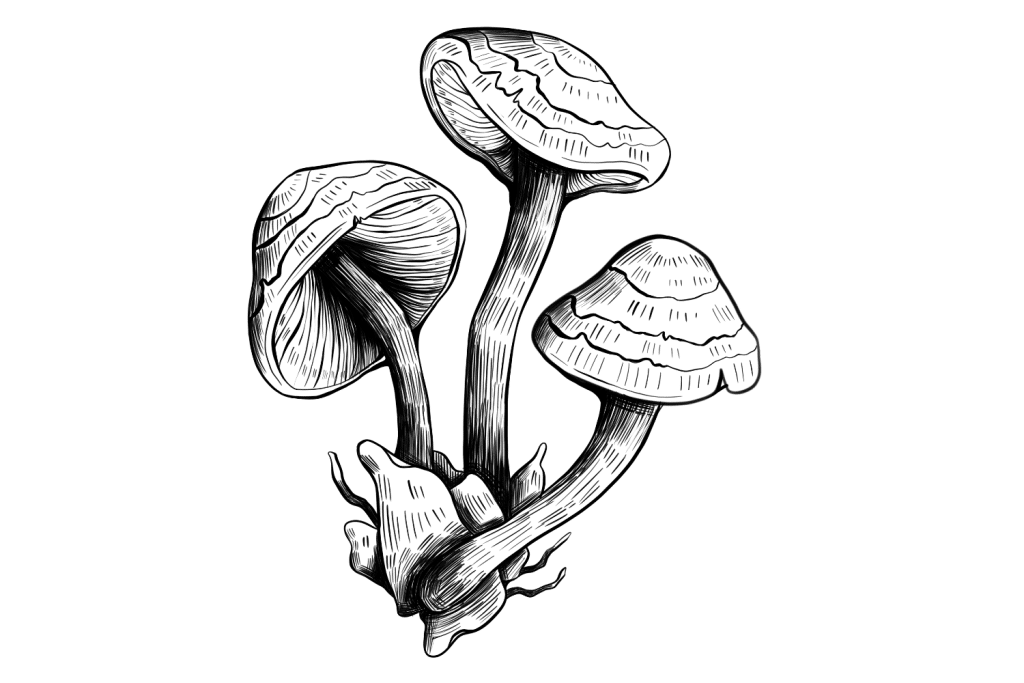
Panaeolus foenisecii, known commonly as the “Haymaker’s” or “Lawnmower’s” mushroom, is a common Panaeolus species that tends to pop up on lawns and grasslands after mowing, grazing, or hay harvesting. It shares several similarities with Panaeolus subbalteatus and can easily be misidentified.
Haymakers mushrooms sport similar-looking caps, stems, and sizes as P. subbalteatus shrooms. They have hay-colored caps and brown, hollow, fibrous stems. The gills are dark brown, often turning black during sporulation. This species grows in a similar habitat and can easily be confused with its psychedelic cousin.
Panaeolus foenisecii doesn’t produce psilocybin or psilocin. It’s not particularly toxic but won’t induce any psychoactive effects and may induce nausea, abdominal pain, and other negative side effects if consumed.
3. Panaeolus papilionaceus (Petticoat Mottlegill)
Panaeolus papilionaceus, commonly known as the Petticoat Mottlegill, is a small to medium-sized mushroom species that has brown caps and stems. Although these mushrooms look different from Panaeolus subbalteatus, they can adopt a similar appearance when wet — turning dark brown and slimy with a dark band around the cap’s base.
The Petticoat Mottlegill shares a similar habitat, growing on pastures, lawns, and areas with decaying organic matter.
4. Conocybe filaris (Fool’s Conecap)
The “Fool’s Conecap,” scientifically known as Conocybe filaris, is a small, brown mushroom that thrives on decaying organic matter. It can be found in similar habitats and may be misidentified for Panaeolus subbalteatus by the amateur forager.
This species is toxic and is capable of producing some nasty side effects if consumed in large quantities. Nausea, vomiting, stomach discomfort, and diarrhea can occur if Conocybe filaris is consumed. The side effects of this shroom are often delayed. After consumption, feelings of nausea and stomach discomfort can dissipate before digestive issues, and in severe cases, kidney and liver dysfunction occur.
Luckily, this species can be distinguished from P. subbalteatus by observing the light-colored stems, creamy rust-colored gills, and present annulus.
5. Galerina marginata (Funeral Bell)
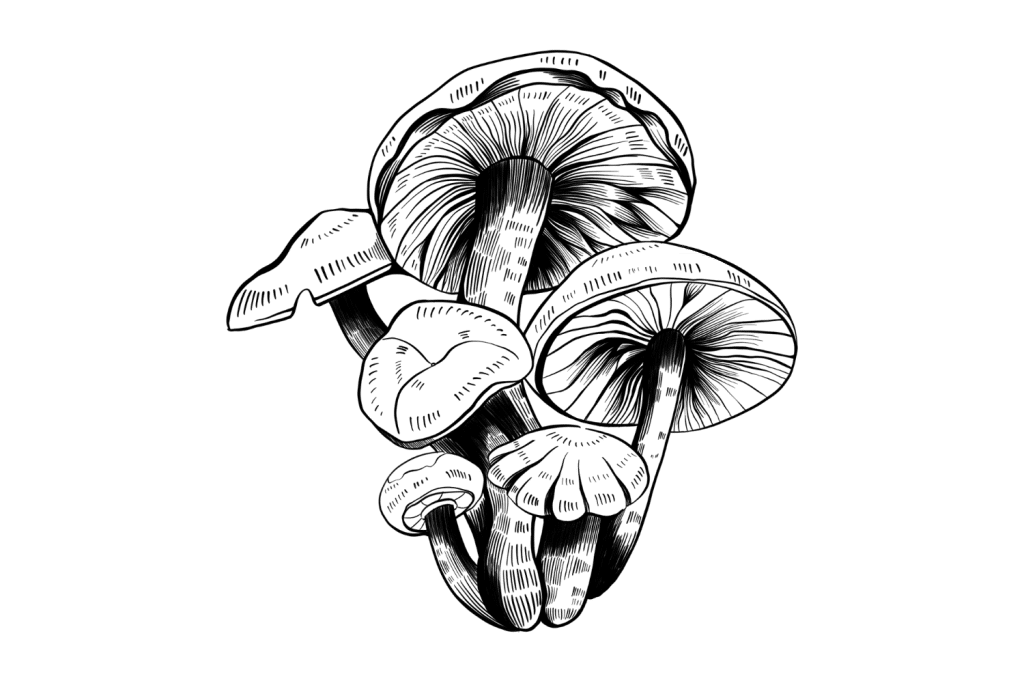
Galerina marginata is commonly known as the “Funeral Bell” for good reason. This mushroom species is highly toxic and can be deadly if consumed. If ingested in large enough quantities, Galerina marginata shrooms can cause severe stomach pains, nausea, vomiting, and, in worse cases, complete organ failure.
This species may be misidentified as Panaeolus subbalteatus by the amateur forager, but luckily, some distinct physical features can be observed to rule it out. They have brown caps that darken with moisture, and the gills are light brown. An annulus is present on the stipes of most shrooms, and the caps are bell-shaped and often larger than those of P. subbalteatus.
Educate yourself on this mushroom regardless of the species you’re to go in search of. Misidentifying this species could be fatal.
Can You Grow Panaeolus subbalteatus at Home?
Yes. It’s possible to grow Panaeolus subbalteatus at home. This species isn’t fussy about environmental conditions and can thrive in an unoptimized environment. This makes it incredibly easy to cultivate at home in an indoor cultivation setup or an outdoor mushroom bed (depending on where you live).
Two beginner cultivation methods can be performed to grow these mushrooms.
- PF-Tek — We consider this the best way to grow large amounts of Panaeolus subbalteatus mushrooms from spores. (Read our full guide to growing mushrooms at home using the PF Tek).
- Uncle Ben’s Tek — This is one of the easiest and cheapest ways to grow Panaeolus subbalteatus mushrooms from spores.
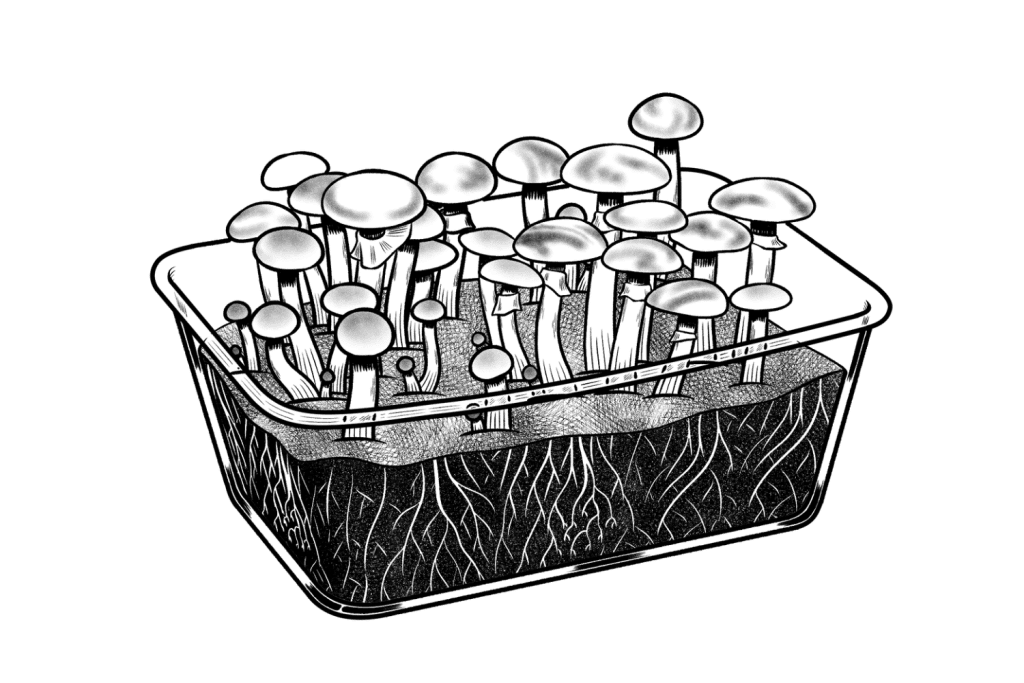
Are Panaeolus subbalteatus Mushrooms Legal?
Although Panaeolus subbalteatus mushrooms grow wild across the globe and may even be present in the vegetable beds in your yard or garden, they’re illegal in most places.
Getting caught with these mushrooms can lead to legal repercussions in the United States, Canada, the United Kingdom, most of Europe, and other countries across the globe. The severity of these penalties varies depending on region but it’s safe to assume that P. subbalteatus and other psilocybin-producing fungi are illegal in your country.
It’s important to know the laws in your area before going in search of Panaeolus subbalteatus or cultivating them at home.
FAQs: Panaeolus subbalteatus & Other Magic Mushrooms
Want to learn more about Panaeolus subbalteatus and other psilocybin-producing fungi?
Check out the answers to the FAQs below, check out our other mushroom-related articles, or send us an email at feedback@tirpsitter.com.
1. What Are the Strongest Species of Psilocybin Mushrooms?
The strongest species of psilocybin-producing fungus is Psilocybe azurescens. This mushroom species is capable of producing psilocybin levels of 1.78% and total tryptamine levels of over 2.51% (dry weight). That’s around 10 to 15 times as potent as the average Panaelus subbalteatus specimen.
Although this species wears the crown for “strongest psilocybin mushroom,” several other species are close to it in terms of psilocybin content.
If you want to learn about the strongest psilocybin mushroom species and strains of Psilocybe cubensis, check out this article: What Shrooms Are the Strongest? Top Strains & Species Ordered By Potency.
2. What Other Panaeolus Species Produce Psilocybin?
Panaeolus subbalteatus isn’t the only species in the genus that produces psilocybin. Unlike Psilocybe species, not all Panaeolus mushrooms produce the psychedelic compound. However, many do, and several produce higher concentrations than P. subbalteatus.
Here are some of the most common psychedelic Panaeolus species:
- Panaeolus cyanescens (Blue Meanies)
- Panaeolus tropicalis (Copelandia Mushrooms)
- Panaeolus cambodginiensis (Gulf Coast Panaeolus)
- Panaeolus cinctulus (Banded Mottlegill)
- Panaeolus lentisporus
- Panaeolus affinis
3. What’s the Easiest Magic Mushroom to Grow at Home?
The easiest magic mushroom species to grow at home is Psilocybe cubensis. This species is the most commonly cultivated psilocybin-producing mushroom across the globe. If you’ve ever purchased shrooms on the black market, it was probably P. cubensis.
This species is made up of hundreds of genetic variants that we refer to as “strains.” These strains have vastly different characteristics. Some are highly potent such as Penis Envy, others boast ghostly white fruits, such as Albino A+, and others are extremely easy to cultivate, such as Golden Teacher.
If you’re new to mushroom cultivation, we recommend choosing a beginner-friendly strain of P. cubensis.
Here are some of the easiest Psilocybe cubensis strains to grow at home:
- The Golden Teacher Strain
- The Cambodian Strain
- The Colombian Strain
- The Koh Samui Strain
- The Lipa Yai Strain
- The Allen Strain
- The Hillbilly Strain
- The F+ (Florida White) Strain
- The PF Classic Strain
Subscribe For More Psychedelics 🍄
References
- Berkeley, M. J., & Broome, C. E. (1861). Notices of British fungi (901–951). Ann. Mag. Nat. Hist, 7, 373-382.
- Murrill, W. A. (1916). A very dangerous mushroom. Mycologia, 8(3), 186-187.

